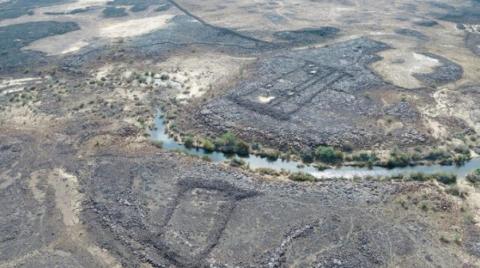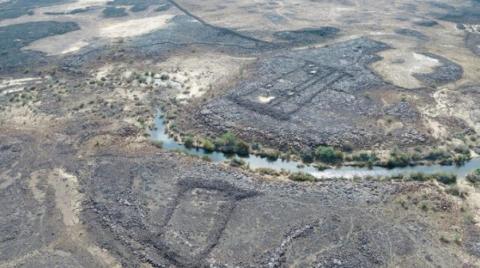
A new scientific study has uncovered the mysteries of ancient stone structures in Saudi Arabia's AlUla, revealing that they were ritual constructions created by ancient herders and hunters for sacrificing animals as offerings to the divine.
Conducted by the University of Western Australia in collaboration with the Royal Commission for AlUla, the study has been published in the peer-reviewed journal “PLOS ONE.”
It revealed that initial archaeological surveys in the northwest of Saudi Arabia in 1970 identified an ancient and mysterious rectangular structure with unique sandstone walls measuring 95 meters in length.
In the following decades, the rectangular structures known as “mustatil” were spotted throughout the Kingdom, yet they were not excavated until 2018.
These prehistoric structures have been under study for the past five years as part of an archaeological investigation conducted by the Royal Commission for AlUla.
According to the study, the rectangular structures follow a similar architectural blueprint with the smallest being around 20 meters long and the largest exceeding 600 meters.
They consist of two thick walls connected by five long walls to create up to four courtyards.
Access to the mustatil is possible through a narrow entrance at its base. Its head was used as the main place for rituals.
Over the past five years, archaeologists have discovered more than 1,600 massive mustatil structures scattered across northwestern Saudi Arabia, dating back over 7,000 years to the end of the Neolithic period.
Current evidence indicates that the rectangular structures were used between 5,300 and 4,900 BCE, a time when the Arabian Peninsula was green and humid. After a few generations, ancient inhabitants began reusing the structures for burying human remains.
The study noted that understanding the purpose and functions of the mustatil is still in its early stages.
Further studies will continue to focus on understanding the purpose of their construction as researchers hope that future excavations and analyses will reveal more insights about these structures and the people who built them.












